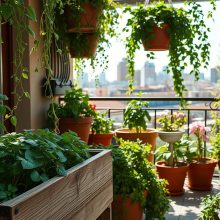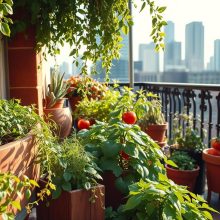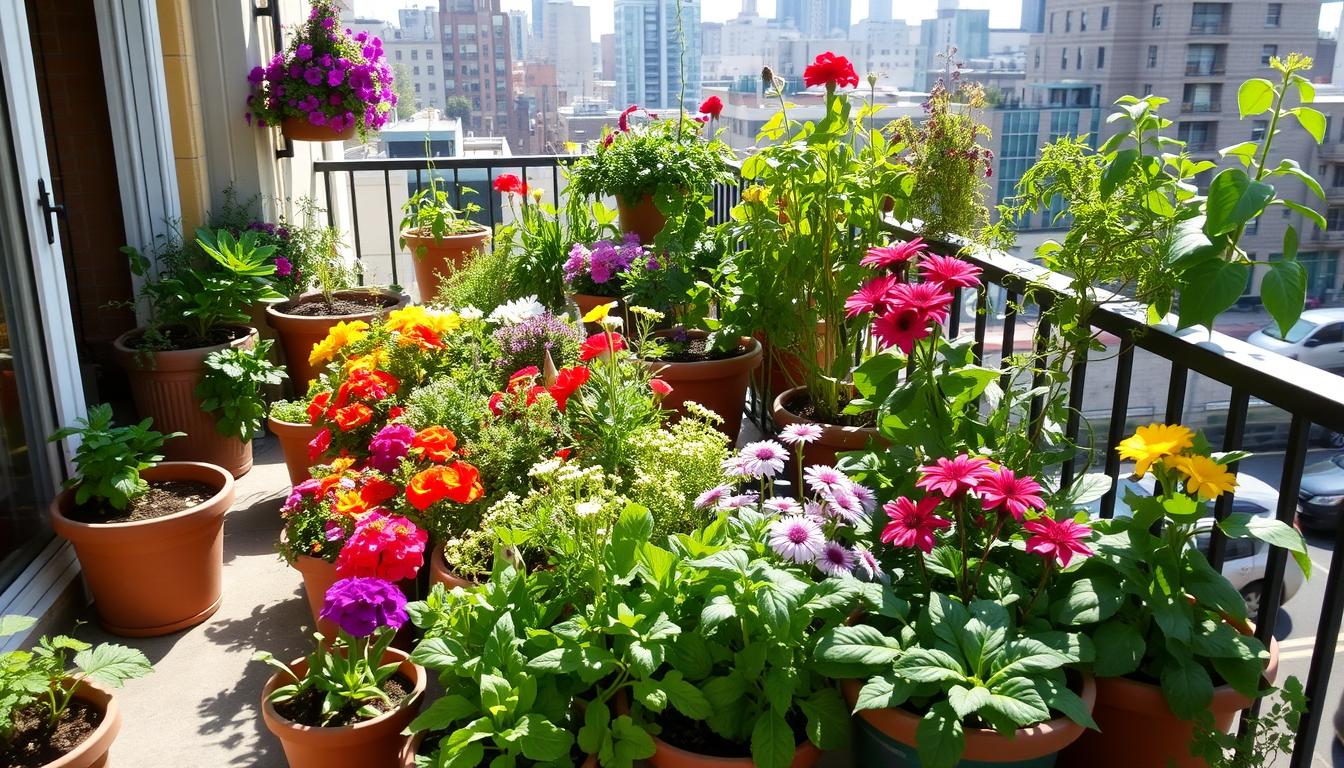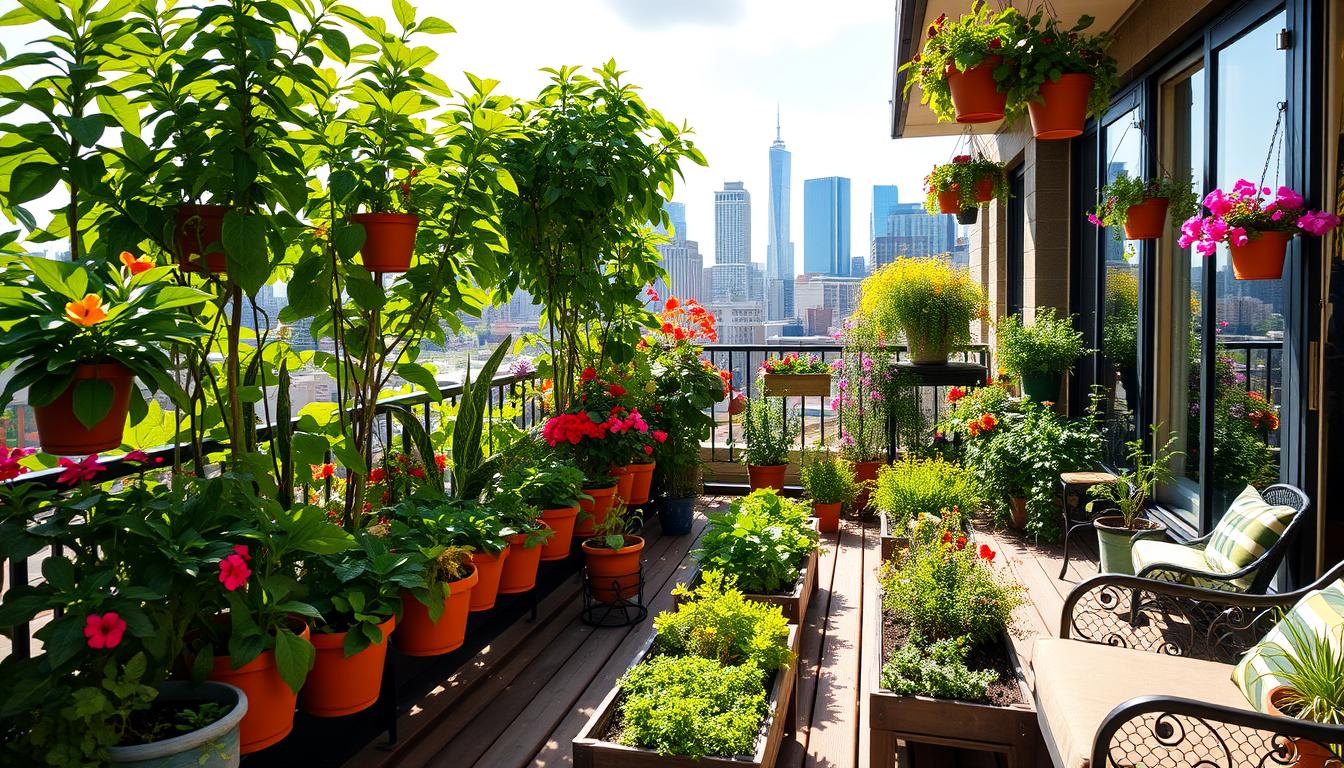How to Start Balcony Gardening: A Complete Guide
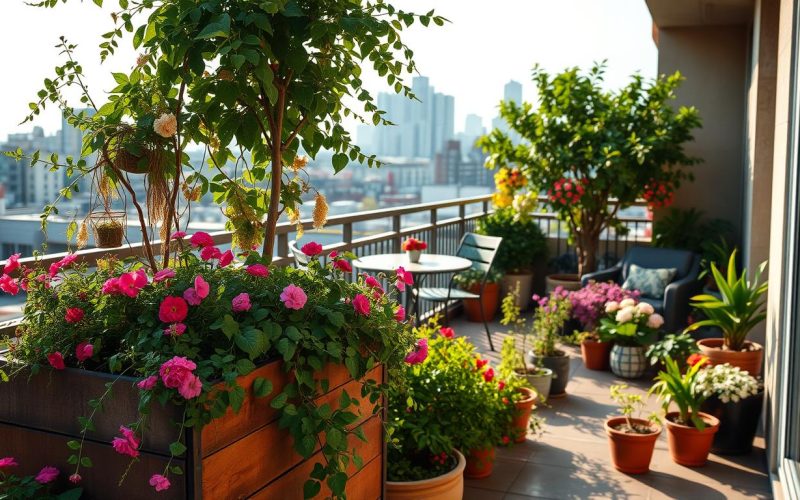
Urban dwellers often dream of growing their own plants but feel limited by space constraints. Balcony gardening offers an exciting solution for city residents wanting to create a personal green sanctuary. This comprehensive guide will unlock the potential of urban gardening, transforming even the smallest outdoor spaces into vibrant, productive gardens.
Urban Gardening has revolutionized how people approach plant cultivation in compact living environments. With just a few square feet of balcony space, anyone can develop a thriving garden that provides fresh herbs, beautiful flowers, and a connection to nature. Balcony Gardening is not just a hobby – it’s a lifestyle that brings joy, fresh produce, and a sense of accomplishment.
Whether you’re a beginner or an experienced plant enthusiast, this guide will walk you through every aspect of creating a successful balcony garden. From selecting the right containers to choosing plants that thrive in limited spaces, you’ll discover practical strategies for turning your balcony into a lush, productive outdoor retreat.
Key Takeaways
- Maximize small spaces through strategic urban gardening techniques
- Learn how to select plants suited for balcony environments
- Understand container selection and plant care fundamentals
- Discover methods for maintaining a healthy balcony garden
- Explore creative solutions for limited outdoor spaces
Introduction to Balcony Gardening
Urban dwellers are finding joy in Small-Space Gardening through balcony gardening. It turns small outdoor spots into lively green havens. Apartment Gardening is a creative fix for city folks who want to connect with nature, even in tight spaces.
Balcony gardening lets city folks grow their own green spots, even with little room. It works for anyone, from high-rise apartment dwellers to those in small city homes. This method lets you grow fresh food, herbs, and lovely plants.
What is Balcony Gardening?
Balcony gardening is a special kind of container gardening for small outdoor areas. It includes:
- Growing plants in containers on balconies, terraces, or small patios
- Using vertical gardening techniques to make the most of small space
- Picking plants that grow well in tight spots
Benefits of Gardening on a Balcony
Urban gardeners get many perks from balcony gardening:
- Fresh, homegrown food right at your door
- Less stress from being close to nature
- Better air quality in your home
- A chance to show off your plant design skills
- A cheaper way to get veggies instead of buying them
Small-Space Gardening on balconies is more than a hobby—it’s a way of life. It brings nature right to urban living. Apartment Gardening lets people make beautiful, useful green spaces, no matter where they live.
Assessing Your Balcony Space
Starting a micro-garden on your balcony needs careful planning. Even small spaces can become green oases with the right strategy.
Measuring Your Available Space
When planning your garden, precision is crucial. Here’s how to make the most of your balcony:
- Use a measuring tape to find out the exact size
- Draw a simple layout of your balcony
- Remember to include space for furniture and other things
- Figure out how much space you have for plants
Considering Light Conditions
Light is essential for a thriving garden. Different plants need different amounts of light. Spend a day watching how the sun hits your balcony to know its light patterns.
- Watch how strong the sun is at different times
- Find out where it’s full sun, partial shade, or complete shade
- Pick plants that fit your balcony’s light
Understanding Wind Exposure
Balconies on high-rise buildings face special wind challenges. Strong winds can harm plants. Use containers that can stand up to the wind and place plants wisely to keep them safe.
- Use things like trellises or screens to block wind
- Choose containers that are sturdy and have heavy bases
- Pick plants that can handle the wind
- Put taller plants in front of smaller ones to protect them
Choosing the Right Containers
Container gardening turns small spaces like balconies into lively green spots. Picking the right containers is key for a thriving patio garden in tight urban spots.
Your container choice is vital for a great balcony gardening experience. Various containers offer special benefits for urban gardeners aiming to use their space well.
Types of Containers for Balcony Gardening
- Traditional Terra Cotta Pots
- Hanging Baskets
- Railing Planters
- Vertical Gardening Systems
- Repurposed Containers
Material Options: Pros and Cons
Choosing the right material for your containers is important. Each type has its own advantages:
- Plastic Containers:
- Lightweight
- Affordable
- Weather-resistant
- Ceramic Containers:
- Attractive design
- Heavier and more stable
- Can be fragile
- Metal Containers:
- Modern aesthetic
- Durable
- Can heat up quickly
Drainage Solutions
Good drainage is crucial in container gardening. Without it, roots can rot. Make sure your containers have many drainage holes. Also, add a layer of gravel at the bottom to stop soil from blocking.
Creative gardeners can turn everyday items into unique plant homes. Old buckets, wooden crates, and even recycled plastic containers can add excitement to your balcony garden with a bit of imagination and care.
Selecting Plants for Your Balcony
Starting a balcony garden is all about picking the right plants. You might want a lush herb garden or an edible garden for fresh produce. The trick is to choose plants that do well in containers.
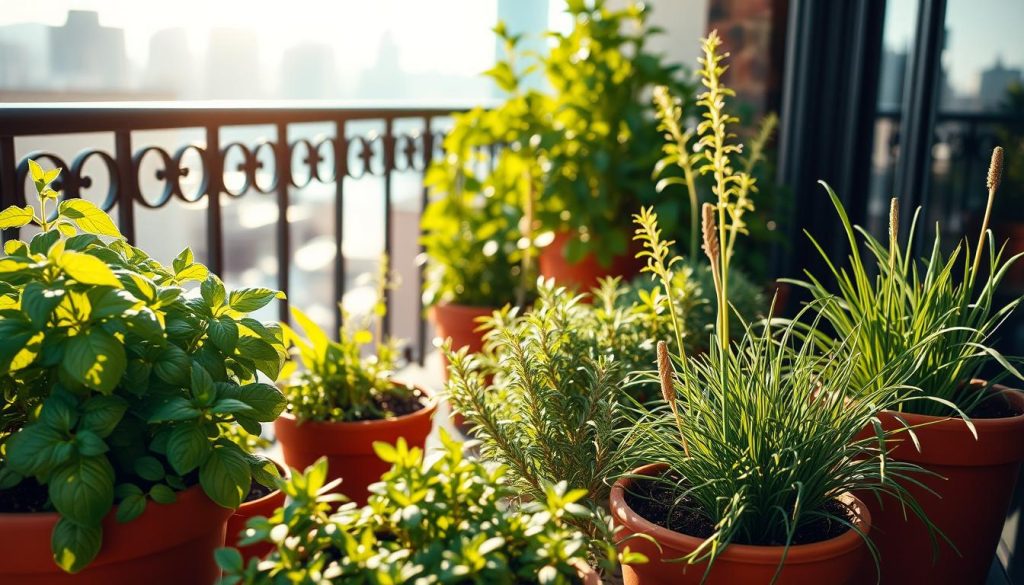
Ideal Herbs for Small Spaces
An herb garden is great for small balconies. Compact and tasty herbs can turn your space into a kitchen dream. Here are some easy-to-grow herbs:
- Basil: Loves sun and grows quickly in small pots
- Mint: Spreads easily, best grown in individual containers
- Rosemary: Drought-resistant and adds beautiful texture
- Thyme: Compact plant ideal for tight spaces
- Chives: Produces edible flowers and thrives in containers
Flowering Plants to Consider
Make your balcony pop with colorful flowers that do well in containers. Choose compact varieties that add beauty without taking over.
- Petunias: Cascading varieties work great in hanging baskets
- Geraniums: Drought-tolerant and bloom throughout summer
- Marigolds: Compact plants that repel garden pests
Vegetables Well-Suited for Containers
Turn your balcony into a mini-farm with veggies made for containers. Compact varieties can give big harvests in small spaces:
- Cherry tomatoes: Excellent for vertical gardening
- Peppers: Thrive in warm, sunny locations
- Lettuce and leafy greens: Quick-growing and perfect for small containers
- Dwarf cucumber varieties: Produce well in limited spaces
Make sure to pick plants that fit your balcony’s light and space. With the right plan, your small balcony can bloom into a lush garden.
Soil and Fertilizer Essentials
Urban gardening starts with soil and nutrients. Container gardens need special soil and fertilizers. Plants in small spaces need extra care to grow well.
Regular garden soil won’t work for balcony gardens. Potting soil is better for container plants. It offers benefits that regular soil can’t.
Selecting the Perfect Potting Mix
When picking soil for urban gardening, look for a high-quality mix. It should include:
- Peat moss for water retention
- Perlite to improve drainage
- Organic compost for nutrient richness
- Vermiculite to enhance soil structure
Nutrient Management for Healthy Plants
Container gardening needs a smart plan for plant nutrition. Potted plants use up nutrients faster than ground plants. So, regular fertilization is key.
Here are some fertilization tips:
- Use slow-release fertilizers for steady nutrition
- Apply organic fertilizers every 4-6 weeks
- Choose balanced nutrient formulas for different plants
- Watch plant health and adjust fertilization as needed
Investing in quality soil and knowing nutrient needs helps urban gardeners. They can make balcony gardens that grow beautiful, healthy plants.
Watering Techniques for Container Plants
Container gardening and micro-gardening need special care for watering. Balcony gardens face unique challenges in keeping plants watered, with limited access to water. Knowing the right watering techniques can make a big difference.
Different plants in your container garden need different amounts of water. It’s important to find a watering plan that fits each plant’s needs. Consider these factors:
- Plant species and individual water needs
- Container size and material
- Current weather conditions
- Sunlight exposure
Identifying Water Needs
Knowing when your plants need water is key. Here are simple ways to check:
- Finger Test: Stick your finger into the soil about an inch. If it’s dry, it’s time to water.
- Visual Inspection: Look for wilting leaves or drooping stems.
- Weight Check: Lift the container. If it’s light, the soil is dry.
Efficient Watering Techniques
For successful container gardening, try these watering tips:
- Water deeply but less often
- Use room temperature water
- Water at the base of plants
- Drain excess water from saucers
Balcony gardeners should aim for a consistent watering routine. It should change with the seasons and meet each plant’s needs. With practice, you’ll get to know your garden’s water needs well.
Pest Management Strategies
Keeping your edible garden safe from pests is key to a thriving balcony garden. Urban gardening faces special challenges, like insects and other pests that harm your plants.
Common Pests in Balcony Gardens
Small urban gardens often attract many pests. The most common pests are:
- Aphids – tiny insects that cluster on plant stems and leaves
- Spider mites – microscopic pests that create webs on plant surfaces
- Whiteflies – small white flying insects that damage plant tissues
- Mealybugs – white cottony creatures that feed on plant sap
Organic Pest Control Methods
Urban gardeners can fight pests with natural methods. Some effective ways include:
- Neem oil spray to repel and eliminate soft-bodied insects
- Insecticidal soap for gentle pest removal
- Introducing beneficial insects like ladybugs
- Companion planting to naturally deter harmful bugs
Regularly check your plants for pests. Look under leaves and along stems for signs of infestation. Catching problems early stops widespread damage and keeps your garden healthy.
Implementing Vertical Gardening
Vertical gardening turns small balcony spaces into lush, green areas. It’s a smart way to use space by growing plants up instead of out. This method lets gardeners grow more while making their space look great.
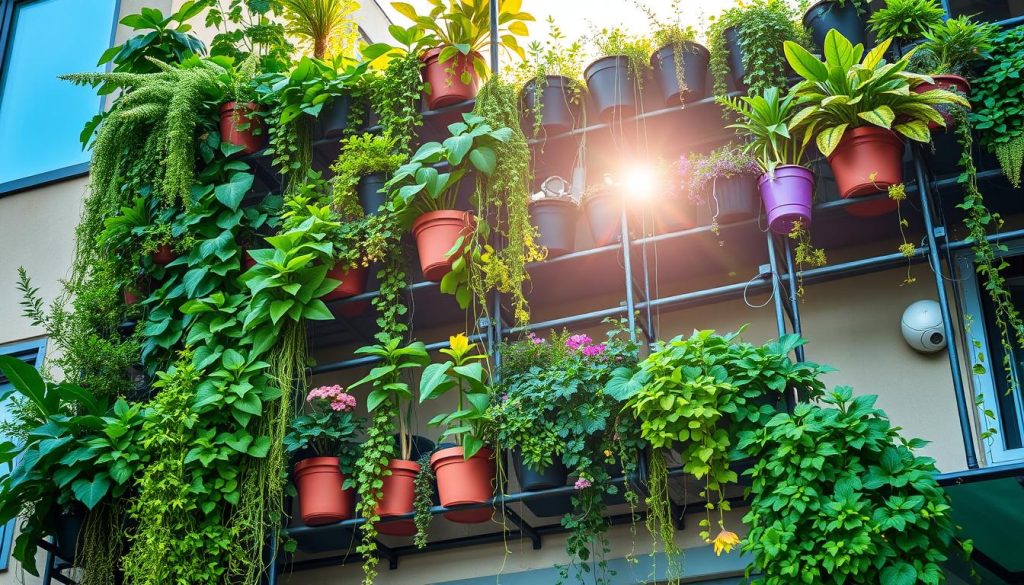
Vertical Gardening is perfect for city gardeners with little outdoor space. It lets you grow more plants on walls and railings, saving a lot of ground space.
Benefits of Vertical Gardening
- Increases growing area by utilizing wall and railing spaces
- Improves air circulation around plants
- Creates aesthetic visual interest
- Reduces pest and disease challenges
- Makes plant maintenance easier
Creative Vertical Plant Display Ideas
Innovative gardeners can turn everyday items into vertical gardens. Here are some ideas for Small-Space Gardening:
- Repurpose wooden pallets as vertical planter walls
- Install hanging basket chains
- Use tiered plant stands
- Create wall-mounted pocket planters
- Implement trellis systems for climbing plants
When setting up your vertical garden, pick light containers and ensure they drain well. Choose plants that trail or climb, like herbs, succulents, and small veggies. With the right plan, your balcony can become a lush vertical garden.
Seasonal Planting Guide
To make your balcony garden grow well, you need to know about seasonal changes. Each season has its own chances and challenges for gardeners.
Best Plants for Spring and Summer
Spring and summer are great for a lively balcony garden. These warmer months are perfect for growing many edible plants. They love sunlight and not too hot or cold weather.
- Herbs: Basil, mint, cilantro, and parsley
- Vegetables: Cherry tomatoes, peppers, lettuce, and spinach
- Flowering plants: Marigolds, nasturtiums, and calendula
Preparing Your Garden for Fall and Winter
When it gets colder, balcony gardening needs smart planning. Choose plants that can handle the cold. They will keep producing with the right care.
- Select cold-resistant plant varieties
- Use protective covers for temperature-sensitive plants
- Move containers to sheltered areas
- Reduce watering frequency
Good balcony gardening means adjusting to the seasons. Pick the right plants and give them the care they need all year. With planning, your garden will stay productive no matter the season.
Maintenance Tips for a Thriving Balcony Garden
To keep your balcony garden healthy, you need to care for it regularly. Container gardening on a balcony requires special care to keep your plants looking good. By following a routine, you can turn your small space into a beautiful garden.
Pruning and Trimming Techniques
Pruning is key for keeping your plants healthy. Trimming helps them grow bushy and prevents them from getting too big. Always use sharp, clean tools to avoid spreading diseases.
- Remove dead or yellowing leaves regularly
- Cut back flowering plants after blooming
- Pinch growing tips to encourage fuller growth
- Trim herbs to prevent flowering and maintain flavor
Seasonal Cleanup Routines
Urban gardening needs flexible care plans for each season. Each season has its own challenges for container gardening, so you need to adjust your care.
- Spring: Refresh soil, remove winter debris, inspect plant health
- Summer: Increase watering frequency, monitor pest activity
- Fall: Prune perennials, prepare containers for winter
- Winter: Protect sensitive plants, reduce watering
Checking your plants regularly is crucial in small gardens. Look for signs of stress, pests, or nutrient needs every week. With the right care, your balcony garden will thrive all year.
Sustainability Practices in Balcony Gardening
Urban gardening and micro-gardening let you make eco-friendly spaces in small areas. You can turn your balcony into a green oasis. This oasis helps the environment and makes your urban space better.
Small-Scale Composting Methods
Composting is great for reducing waste and making soil better. There are small ways to compost in tight spaces:
- Bokashi composting systems for tight spaces
- Compact tumbler composters
- Countertop compost bins with tight-fitting lids
Rainwater Harvesting Techniques
Collecting rainwater is a smart move for micro-gardening. It saves water and helps your plants grow:
- Install small collection containers on balcony railings
- Use portable rain barrels with compact designs
- Create drainage systems that capture water for plant use
Eco-Friendly Gardening Practices
Here are ways to make your urban garden more sustainable:
- Choose biodegradable pots and planters
- Select native plant species
- Implement organic pest control methods
- Use natural fertilizers and soil amendments
By using these green practices, you can make a balcony garden that’s good for the planet. It brings nature to your city home and reduces harm to the environment.
Sharing Your Balcony Garden Experience
Urban gardening turns small spaces into green oases. It’s not just about plants; it’s about making connections and building a community. Your balcony garden can help people come together and learn about the environment.
There are many ways to get involved in urban gardening. Here are some ideas to grow your gardening journey:
- Join local urban gardening social media groups
- Participate in neighborhood plant swap events
- Start a balcony gardening workshop with friends
- Create online tutorials about apartment gardening techniques
Connecting Through Green Spaces
Sharing your gardening skills can strengthen community bonds. Invite neighbors to learn about growing plants in containers. You can also exchange plant cuttings or work on small urban agriculture projects together. Kids love learning about growing food in small spaces.
Digital and Local Networking
Digital platforms are great for urban gardening fans. Sites like Instagram, Pinterest, and gardening forums let you show off your garden. You can also learn from others and inspire gardeners around the world.
Your balcony garden is more than a hobby. It can help grow your community and teach people about the environment.
Conclusion: Your Balcony Garden Journey
Small-space gardening turns city balconies into lively green spots. It lets you create your own little garden, even with little room. Your adventure starts by knowing your space and seeing the possibilities of container gardening.
Starting your balcony garden takes time and creativity. Choose plants that fit your space, pick good containers, and learn how to care for them. With careful planning and effort, you can make a beautiful green area. Every plant you grow shows your growth and connection to nature.
City areas often lack green spots, making balcony gardening key for living green. By improving your gardening skills, you help the environment and make a personal haven. Your balcony can become a place for fresh herbs, lovely flowers, and a sense of pride.
Every great garden begins with a seed and a lot of passion. Look up the best plants for your balcony, understand its needs, and always be ready to learn. Your balcony garden will grow with you, showing off your style and care for the planet.
